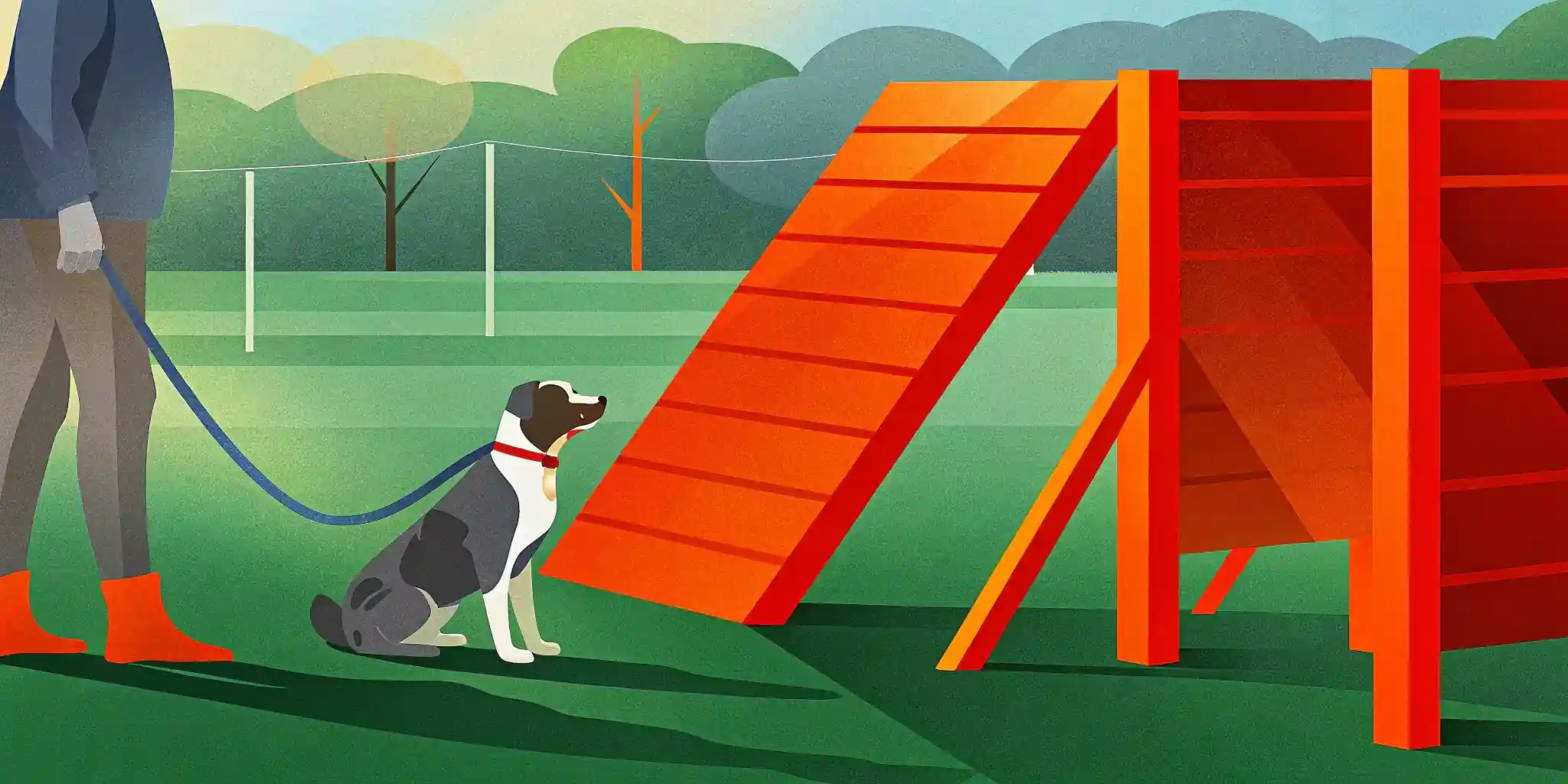
Obedience Training: Happy, Well-Behaved Pets!
Unlock happy, well-behaved pets! Master essential **obedience training** like Sit, Stay, & leash walking. Stronger bonds await!
Basic Obedience Training: Sit, Stay, Come, and Leash Walking Essentials
Bringing a new furry friend into your life is an incredibly rewarding experience. But beyond the cuddles and playtime, responsible pet ownership includes proper training. Basic obedience training not only makes your life easier but also strengthens the bond with your dog and ensures their safety. Today, we’ll delve into four fundamental commands: Sit, Stay, Come, and Leash Walking, providing you with the essential knowledge and techniques to start training your canine companion.
The Importance of Basic Obedience
Before we dive into the specifics, let’s talk about why basic obedience training is so crucial. It’s more than just teaching your dog tricks. It’s about communication and building a relationship based on trust and understanding. A well-trained dog is a happier dog. They understand expectations, feel more secure, and are less likely to develop behavioral issues stemming from frustration or boredom.
Furthermore, obedience training enhances your dog’s safety. Imagine your dog darting into the street – a reliable “Come” command could save their life. Mastering basic obedience for puppies also sets the stage for more advanced training later on, such as agility or therapy dog work.
The “Sit” Command: A Foundation for Everything Else
The “Sit” command is often the first command taught, and for good reason. It’s a simple action that teaches your dog focus and self-control.
How to Teach “Sit”:
- Hold a high-value treat in your hand.
- Show the treat to your dog, then slowly move it upwards and slightly back over their head. Their nose will follow the treat, causing their rear to naturally lower into a sitting position.
- As their rear touches the ground, say “Sit” clearly and calmly.
- Immediately give them the treat and praise them enthusiastically.
- Repeat this process several times in short sessions (5-10 minutes).
Troubleshooting:
- If your dog jumps up, you’re holding the treat too high or moving it too quickly.
- If they back away, you’re moving the treat too far back.
- Remember to be patient and consistent. Every dog learns at their own pace. I’ve seen some dogs master it in a day, while others need a week or more.
 Caption: A young Golden Retriever puppy learns the “Sit” command with a positive reinforcement approach.
Caption: A young Golden Retriever puppy learns the “Sit” command with a positive reinforcement approach.
The “Stay” Command: Mastering Self-Control
The “Stay” command teaches your dog impulse control and patience, which are invaluable in various situations. It’s a bit more challenging than “Sit” and requires building on that foundation. The key to success with “Stay” is to increase the duration gradually.
How to Teach “Stay”:
- Have your dog sit.
- Hold your hand up in a “stop” gesture and say “Stay” firmly.
- Initially, only hold the “Stay” for a second or two.
- Reward your dog with a treat and praise if they remain in place.
- Gradually increase the duration of the “Stay,” adding a second or two each time.
- Once they can hold it for a few seconds, start adding distance by taking a step back.
- Slowly increase the distance, always returning to your dog to reward them.
Troubleshooting:
- If your dog breaks the “Stay,” don’t get discouraged. Simply say “No” calmly, put them back in the “Sit” position, and start again with a shorter duration or less distance.
- Don’t rush the process. It’s better to have a solid “Stay” for a few seconds than a shaky one for a minute.
- Use positive reinforcement: Rewards and praise are crucial for motivation.
The “Come” Command: Lifesaving Recall
The “Come” command, or recall, is arguably the most important command you can teach your dog. A reliable recall can prevent countless accidents and potential dangers.
How to Teach “Come”:
- Start in a quiet, enclosed area, like your backyard or living room.
- Say your dog’s name followed by “Come” in a cheerful and enthusiastic voice.
- As they come to you, encourage them with open arms and excitement.
- When they reach you, reward them with a high-value treat and lots of praise.
- Gradually increase the distance and distractions.
- Always make coming to you a positive experience. Never use the “Come” command to scold or punish your dog.
Troubleshooting:
- If your dog hesitates or doesn’t come, go back to basics and use a long leash for added control. Gently guide them towards you while repeating the command.
- Avoid using the “Come” command repeatedly if your dog isn’t responding. This will dilute the meaning of the command.
- Consider using a whistle: a distinct sound that can carry over long distances and in noisy environments.
 Caption: A dog eagerly runs towards its owner after being called in a park, showcasing a successful recall.
Caption: A dog eagerly runs towards its owner after being called in a park, showcasing a successful recall.
Leash Walking Essentials: No More Pulling!
Walking your dog on a leash should be a pleasant experience for both of you. However, many dog owners struggle with leash pulling. The key to loose leash walking training is to teach your dog that pulling doesn’t get them anywhere.
How to Teach Loose Leash Walking:
- Start with a comfortable harness or collar and a standard leash (not a retractable one).
- Hold the leash loosely, allowing for a slight “U” shape.
- As you start walking, if your dog starts to pull, immediately stop.
- Stand still and wait for your dog to stop pulling and offer you slack in the leash.
- Once they do, praise them and start walking again.
- Repeat this process every time your dog pulls.
Tips for Success:
- Change direction frequently to keep your dog engaged.
- Use high-value treats to reward them for walking nicely beside you.
- Keep training sessions short and positive.
- Be consistent. It takes time and patience, but eventually, your dog will learn that pulling doesn’t get them what they want.
Alternative Techniques:
- “Reverse Direction” Method: When your dog pulls, turn and walk in the opposite direction. This will encourage them to focus on you.
- “Red Light, Green Light”: Designate “Red Light” as stopping and “Green Light” as walking. This teaches your dog to pay attention to your cues.
Consistency is Key
Training takes time, patience, and consistency. Don’t get discouraged if your dog doesn’t master these commands overnight. Every dog learns at their own pace. Keep training sessions short, positive, and fun. Remember to use positive reinforcement techniques, such as treats, praise, and toys, to motivate your dog.
 Caption: A dog comfortably walks on a loose leash, demonstrating successful leash training.
Caption: A dog comfortably walks on a loose leash, demonstrating successful leash training.
Final Thoughts
Basic obedience training is an investment in your dog’s well-being and your relationship with them. By mastering these four essential commands – Sit, Stay, Come, and Leash Walking – you’ll not only have a well-behaved companion but also a stronger, more fulfilling bond. And always remember, if you’re struggling with training, don’t hesitate to seek professional help from a certified dog trainer or veterinary behaviorist. They can provide personalized guidance and support to help you and your dog succeed. Happy training!


